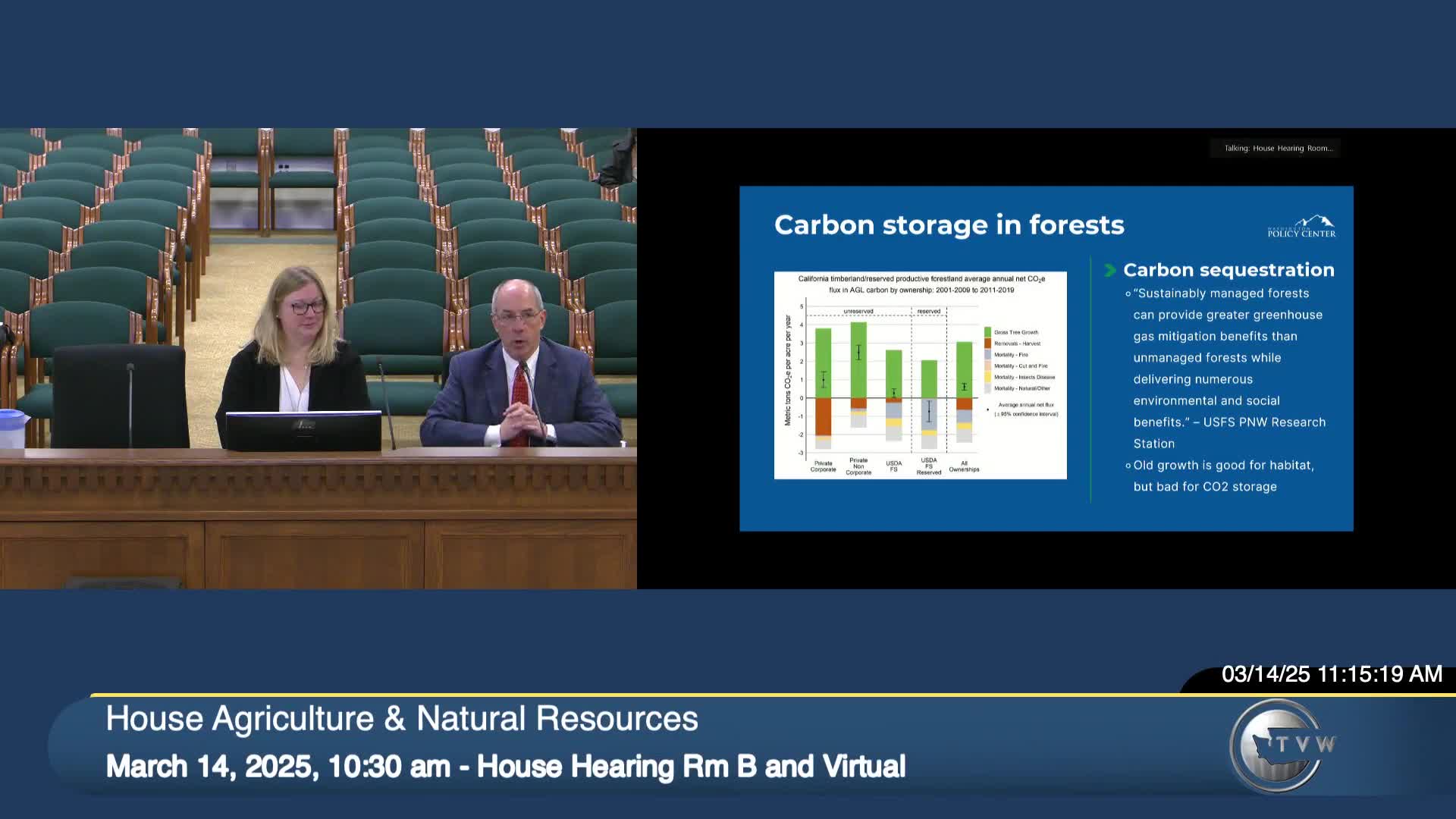Forest stewardship plan emphasizes carbon sequestration benefits and sustainable management
March 14, 2025 | Agriculture and Natural Resources, House of Representatives, Legislative Sessions, Washington
This article was created by AI summarizing key points discussed. AI makes mistakes, so for full details and context, please refer to the video of the full meeting. Please report any errors so we can fix them. Report an error »

Carbon sequestration took center stage at the House Agriculture & Natural Resources Committee meeting on March 14, 2025, as experts discussed the critical role of sustainably managed forests in combating climate change. The conversation highlighted how trees absorb carbon dioxide (CO2) from the atmosphere, a process that not only mitigates greenhouse gases but also produces oxygen, making it a win-win for the environment.
A representative from the U.S. Forest Service Pacific Northwest Research Station emphasized that sustainably managed forests can provide greater greenhouse gas mitigation benefits compared to unmanaged ones. This assertion was backed by a chart from California's climate law assessment, which illustrated the carbon flux of various forest types. The data revealed that private corporate forests, private non-corporate forests, and USDA Forest Service lands are all effectively absorbing CO2, with significant increases in carbon storage noted.
However, the discussion also pointed out that USDA Forest Service reserved lands are currently emitting CO2, primarily due to forest fires. This underscores the importance of proper forest management practices, including timber harvesting, which allows for the growth and replanting of trees, thereby enhancing carbon storage capabilities.
Committee members expressed interest in the data presented, with one member requesting the original journal citation for further context. The meeting concluded with a strong emphasis on the need for strategic forest stewardship to maximize carbon sequestration efforts, highlighting the ongoing commitment to environmental sustainability within the state's forestry practices.
A representative from the U.S. Forest Service Pacific Northwest Research Station emphasized that sustainably managed forests can provide greater greenhouse gas mitigation benefits compared to unmanaged ones. This assertion was backed by a chart from California's climate law assessment, which illustrated the carbon flux of various forest types. The data revealed that private corporate forests, private non-corporate forests, and USDA Forest Service lands are all effectively absorbing CO2, with significant increases in carbon storage noted.
However, the discussion also pointed out that USDA Forest Service reserved lands are currently emitting CO2, primarily due to forest fires. This underscores the importance of proper forest management practices, including timber harvesting, which allows for the growth and replanting of trees, thereby enhancing carbon storage capabilities.
Committee members expressed interest in the data presented, with one member requesting the original journal citation for further context. The meeting concluded with a strong emphasis on the need for strategic forest stewardship to maximize carbon sequestration efforts, highlighting the ongoing commitment to environmental sustainability within the state's forestry practices.
View full meeting
This article is based on a recent meeting—watch the full video and explore the complete transcript for deeper insights into the discussion.
View full meeting
